Fare Reconciliation
Fare Counting and Reconciliation
Transit Service Group will maintain oversight of fare counting and reconciliation with a step-by-step process that ensures separation of duties. TSG will develop online record keeping tools that will record fares information starting with drivers, to supervisors counting cash, managers depositing cash and bookkeepers verifying deposits.
All fare media will be reconciled daily to ensure that fares are accounted for honestly. The step-by-step process will identify red flags where problems occur.
Driver Fare Reconciliation Entry
The driver should record the fare payment in the dispatch application at the point when they pick up passengers. At the end of their shifts, drivers will record count data in an online form. This form is designed based on the needs of the service.
Timecard Dashboard View
Step 1
The driver accesses the online form through the tablet installed on the bus. The driver enters Date, Name, Unit ID, and Run ID.
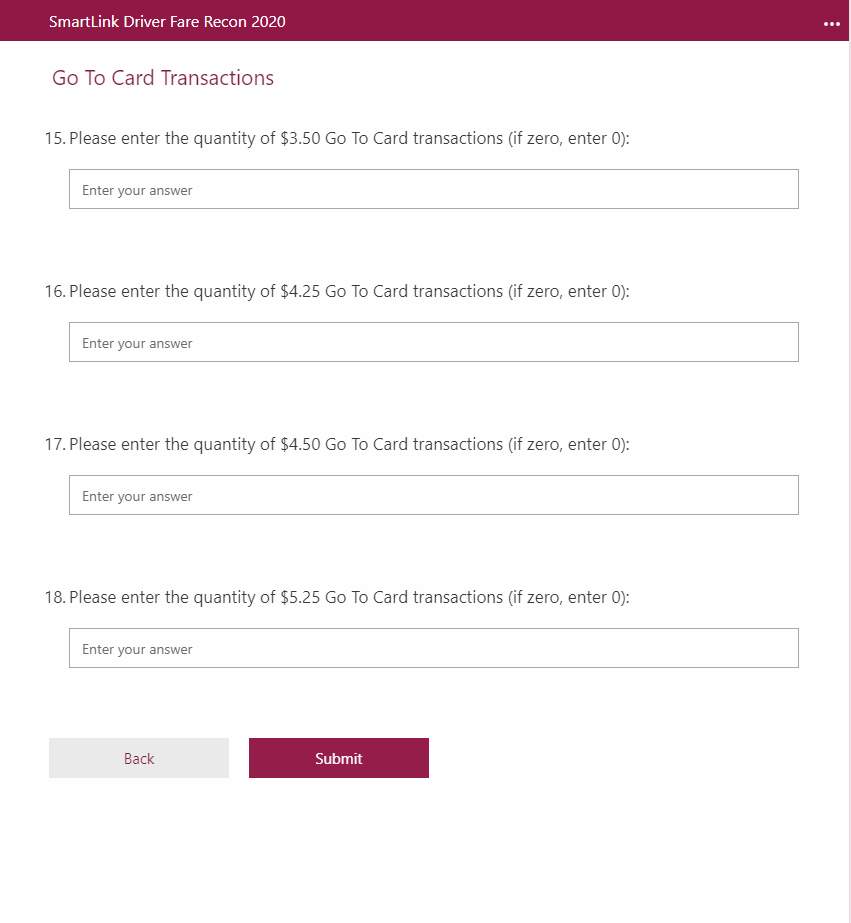
Step 2
The driver enters the quantity of cash fares. The driver does not count the amounts, just the number quantity of riders in each cash fare amount. The goal is for the drivers not to know how much they collected. Many times, passengers overpay on fares and this can temp the drivers to pilfer any overage in fares.
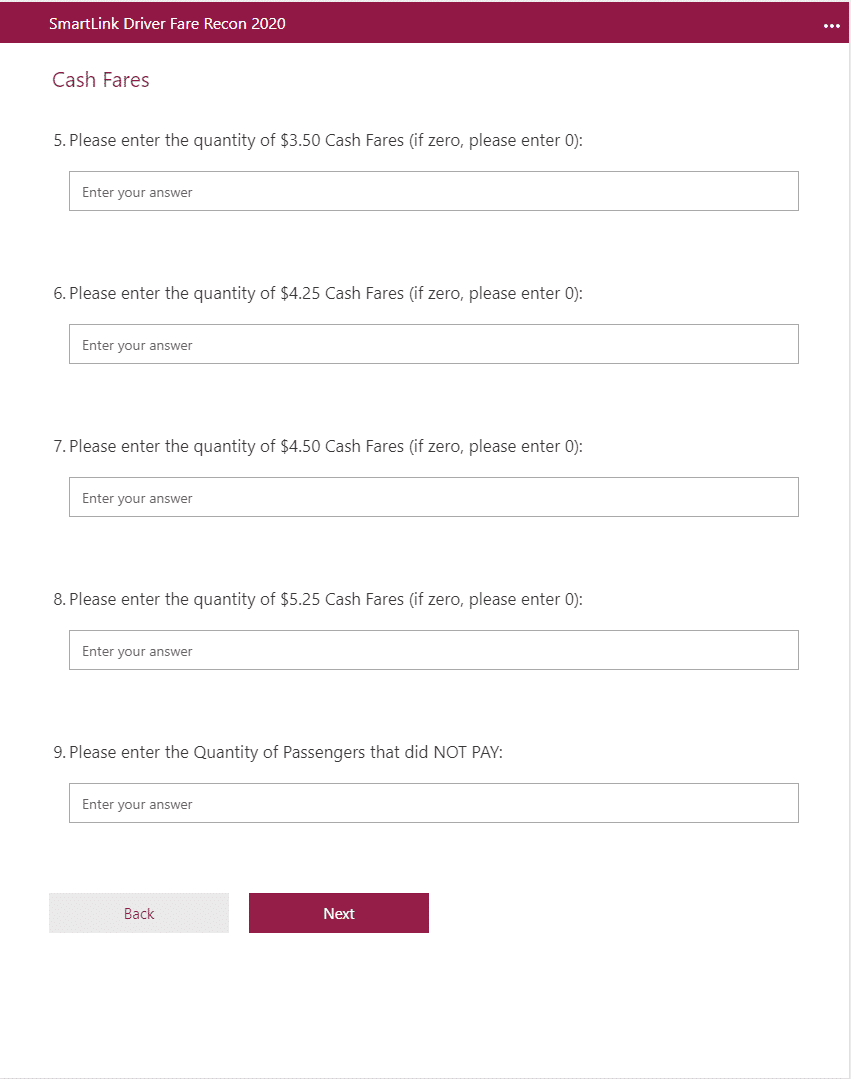
Step 3
The driver records the quantity of passengers that used transfers. The driver retains the physical transfer card to be counted by the supervisor and reconcile for all fares to account for.
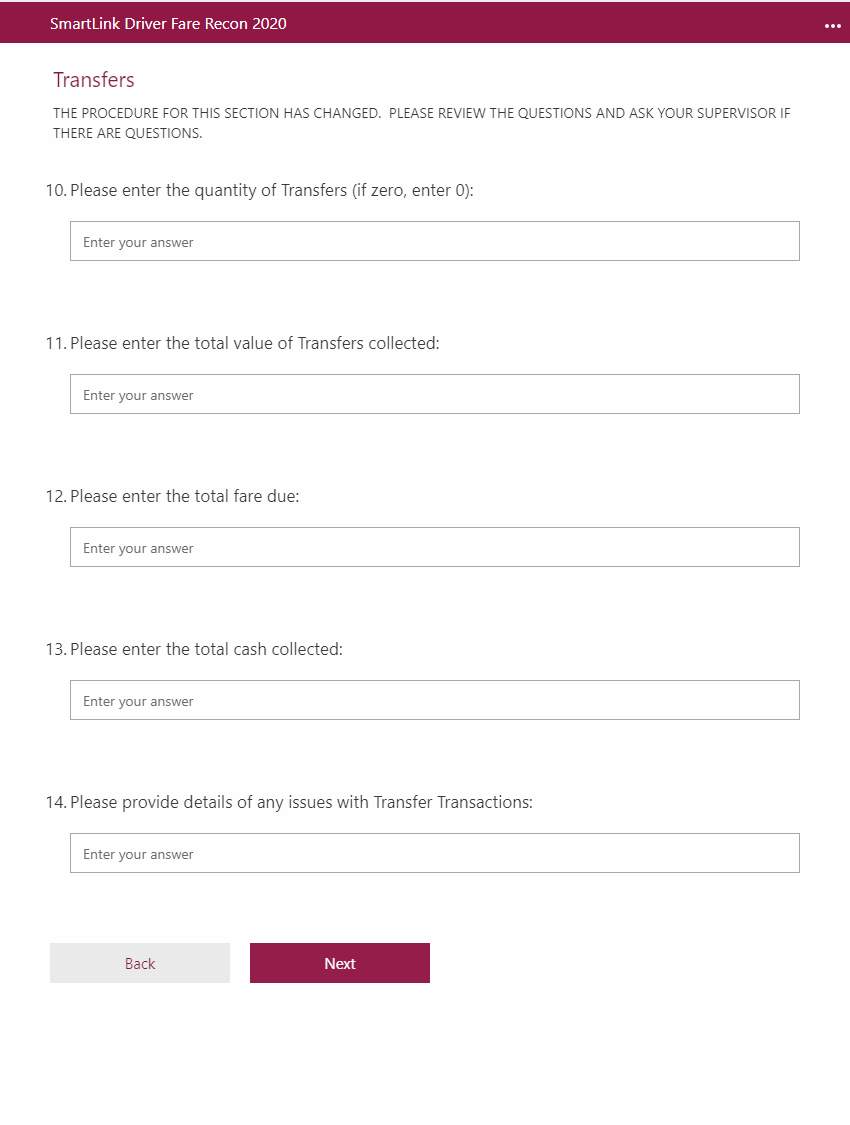
Step 4
The driver records the quantities of Go To Card fares. Then the driver submits the data.
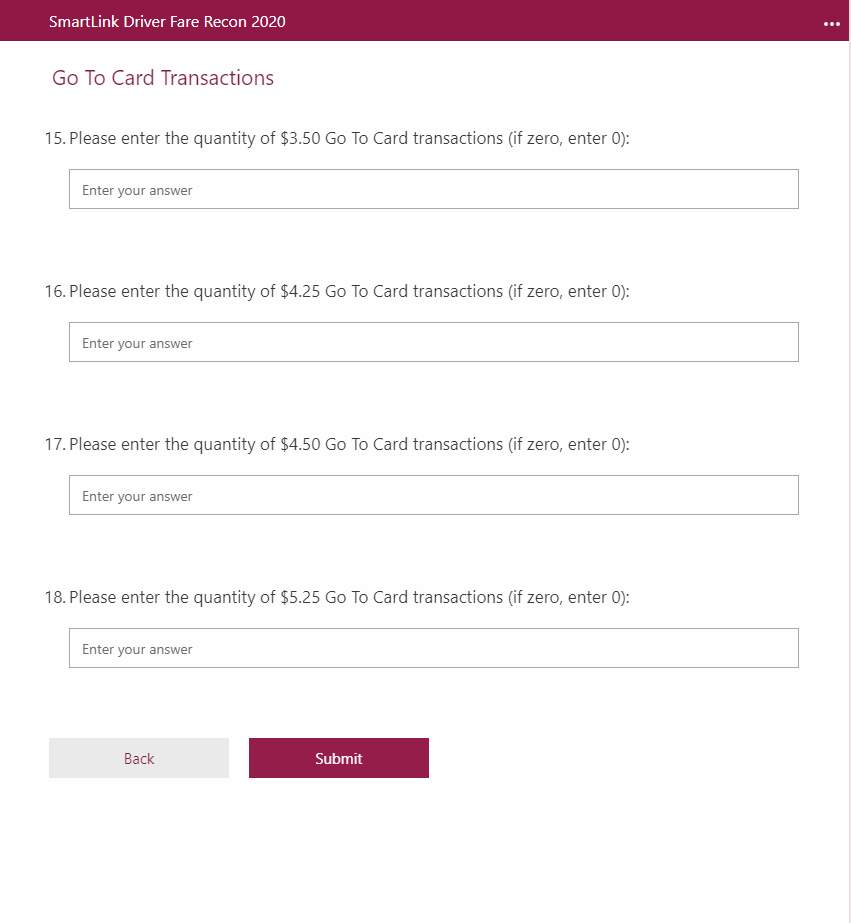
*This process will be changed dependent on the fare types used and the capabilities of the dispatch system.
Supervisor Cash Count
The supervisor counts all cash that is submitted by the drivers. It is important that the supervisor just counts the cash and does not have access to the system. This is to ensure that the supervisor does not know what the amount is supposed to be. If they know the amount, the supervisor could modify the count to the benefit of themselves or the driver.
The Supervisor Cash Count would modified to include counts of all physical fare media that the drivers would collect to include tokens or tickets.
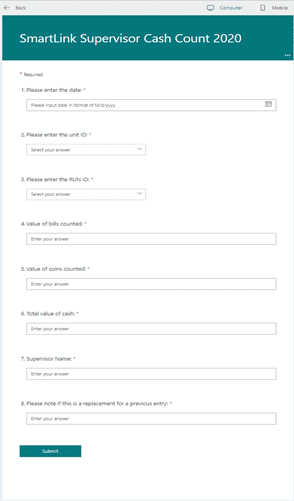
The supervisor records the cash actually received by using a tool or a form like this.
Weekly (or Daily) Cash Deposit
The next step is to prepare the cash deposit to the bank. It is preferable that a different individual than the supervisor is responsible for this procedure. The form can be made for a daily deposit or weekly deposit. The form in this demonstration is a weekly deposit form. The individual making the deposit recounts all the cash and does not have access to the amounts that are required for each Run. This provides a total for the day in actual cash count and other fare media count.
The person depositing the cash will complete the Deposit form. This form will be modified to include total counts for all fare media.
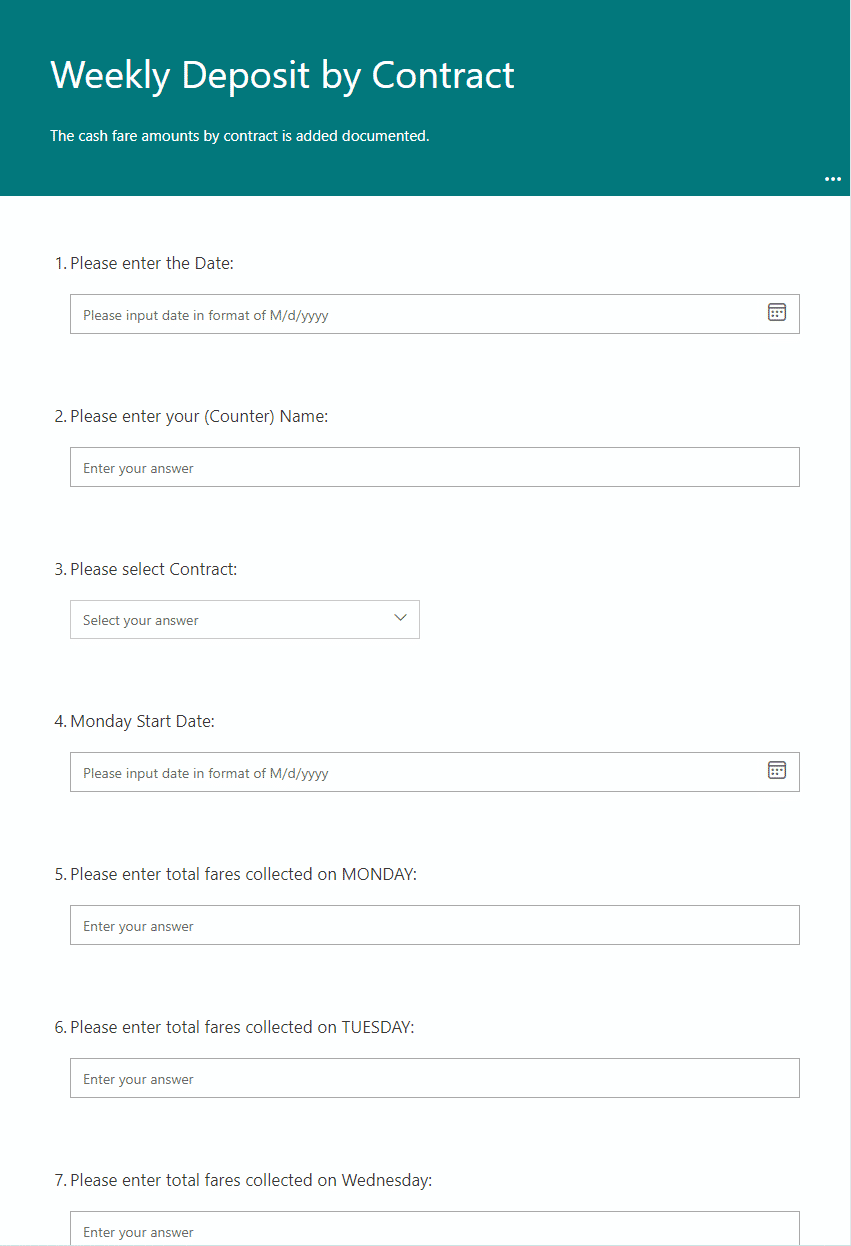
An employee other than the supervisor can make a deposit to the bank. That employee can use a form like this one to record the fares being deposited.
Deposit Verification
The bookkeeper of your agency will verify that the deposits made match the amounts on the Weekly (or Daily) Deposit Form. This will ensure that the deposits are accurate.
Monthly Reconciliation of Fares to Account For
